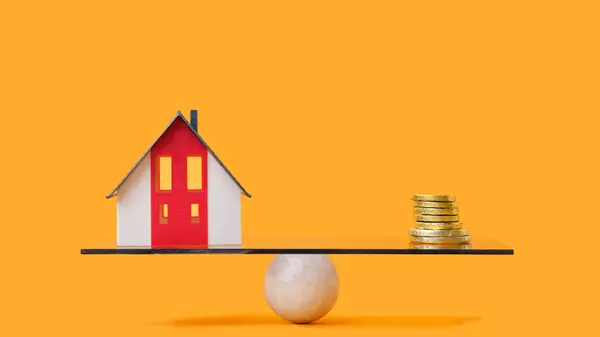What Does Housing Affordability Really Look Like in Arizona?
Spoiler alert: Housing affordability isn’t as simple as the headlines make it sound.
Depending on who you ask, the real issue isn’t just home prices, or even the number of homes on the market. It’s about access. It’s about opportunity. And most of all, it’s about what affordable really means for the people trying to buy.
So, what does affordability look like here in Arizona? And where do you actually stand a chance of finding the right home at the right price?
Let’s break it down.
Inventory Crisis or Access Crisis?
If you've been following the national conversation, you've probably heard a lot about the "housing shortage." But two of the most well-known names in real estate data—Logan Mohtashami and Ivy Zelman—have different takes on what’s really going on.
Ivy Zelman’s Take: The Problem Is Accessibility, Not Just Supply
If you haven’t heard of Ivy Zelman before, just know that she predicted the 2008 housing bubble nearly three years before it burst. When it comes to the housing market today, she argues that the real challenge isn’t a lack of homes, it’s a lack of affordable homes.
She makes the point that it doesn’t matter how many houses are on the market if most people can’t swing the monthly payment.
In a recent webinar, Zelman said:
“You could talk as much as you want about how many units might be short, but if you can’t offer, whether it be a rental unit at less than a thousand a month or the mortgage payment at a thousand dollars a month, who really cares?
Her example hits home: young adults graduating from college today often can’t even afford to rent their own place, let alone buy. So while there may be homes available, there’s a gap between what’s out there and what buyers can realistically afford.
Logan Mohtashami’s Take: Affordability Has Always Been a Challenge
Housing market analyst Logan Mohtashami brings a historical view to the conversation, asking:
“When was housing ever affordable?”
He points out that home prices have gone up during nearly every major period of inflation, from the 1940s to the 1970s to the recent pandemic years. According to Logan, waiting for prices to drop dramatically isn’t a strategy. It’s wishful thinking.
And yet, millions of people still buy homes every year. He says the way most buyers make homeownership work is by combining incomes, being flexible about location, or adjusting their expectations on size or features.
How Does Arizona Compare?
While national experts debate the “why,” Realtor.com recently looked at the numbers to grade each state on how well they’re handling housing affordability and homebuilding.
Their State Report Cards evaluate two affordability metrics and two new construction metrics:
-
REALTORS® Affordability Score: 25%
-
Median earner’s share of income spent on median-priced listing (ranked low to high): 25%
-
Permit-to-population ratio: 40%
-
New-construction premium (ranked low to high): 10%
Some key takeaways from their findings: Southern and Midwestern states tend to score higher on affordability. Western and Northeastern states, on the other hand, often struggle more, thanks to higher prices and tougher building restrictions.
In addition, only 18 states can claim that their median home is affordable for their median earner (using the standard that housing costs should not exceed 30% of household income).
So, where does Arizona fall?
Arizona received a C grade in Realtor.com's 2025 State-by-State Housing Report Card, reflecting ongoing affordability challenges despite active homebuilding efforts. Arizona's affordability score of 0.50 places it below the national average, indicating that a significant portion of homes are not affordable to middle-income households. Despite these challenges, Arizona remains a leader in homebuilding, accounting for 4% of all U.S. residential building permits in 2024.
What Housing Affordability Looks Like in Our Community
Statewide scores are helpful, but the real story is what’s happening right here in our community.
In Tucson and surrounding areas, affordability can look different depending on the neighborhood you’re considering, new developments in the area, and available programs like down payment assistance or builder incentives.
Many first-time homebuyers are finding success with new builds in Tucson, Sahuarita, Marana, and Vail. Builders are often offering strong incentives, like rate buydowns or below-market interest rates, especially when buyers use their preferred lenders.
There are also several great programs available, like the PimaTucson Lighthouse program, which provides down payment assistance and a competitive fixed rate lower than the current market average.
The Good News: There Are Paths Forward
Yes, home prices have gone up. Yes, mortgage rates are a factor. But that doesn’t mean your dream of homeownership is out of reach.
Here’s how buyers in our area are making it happen:
-
Getting clear on their budget early (before falling in love with homes outside their price range)
-
Exploring different financing options (like adjustable-rate loans, first-time buyer grants, or rate buydown programs)
-
Staying flexible on location or home features to find the right fit at the right price
If you’re curious about what’s possible for you in today’s market, or just want to understand where the best opportunities are right now, contact me for the latest local information.
Categories
Recent Posts












